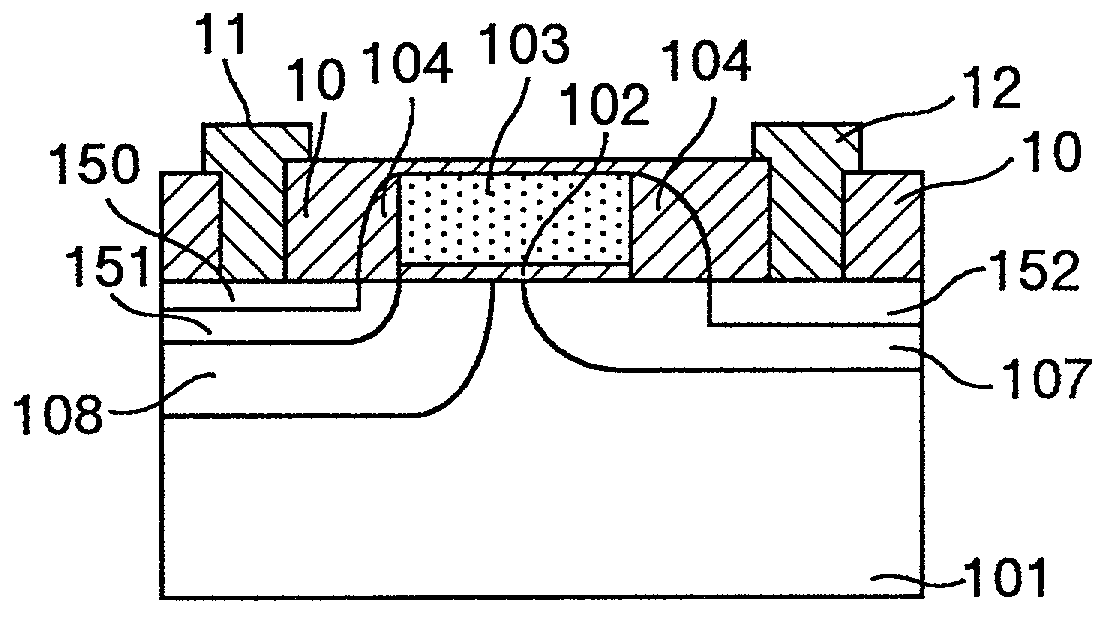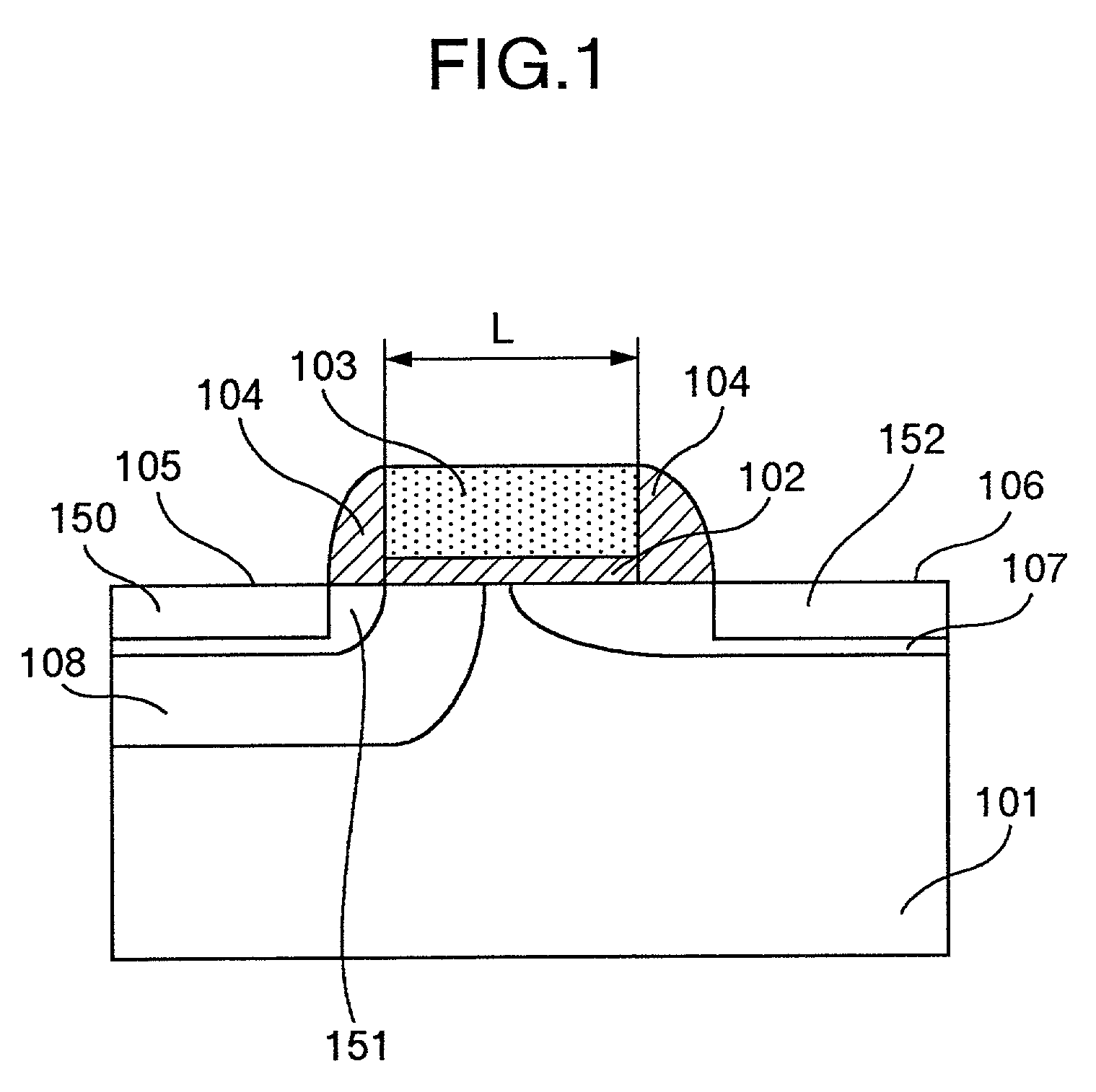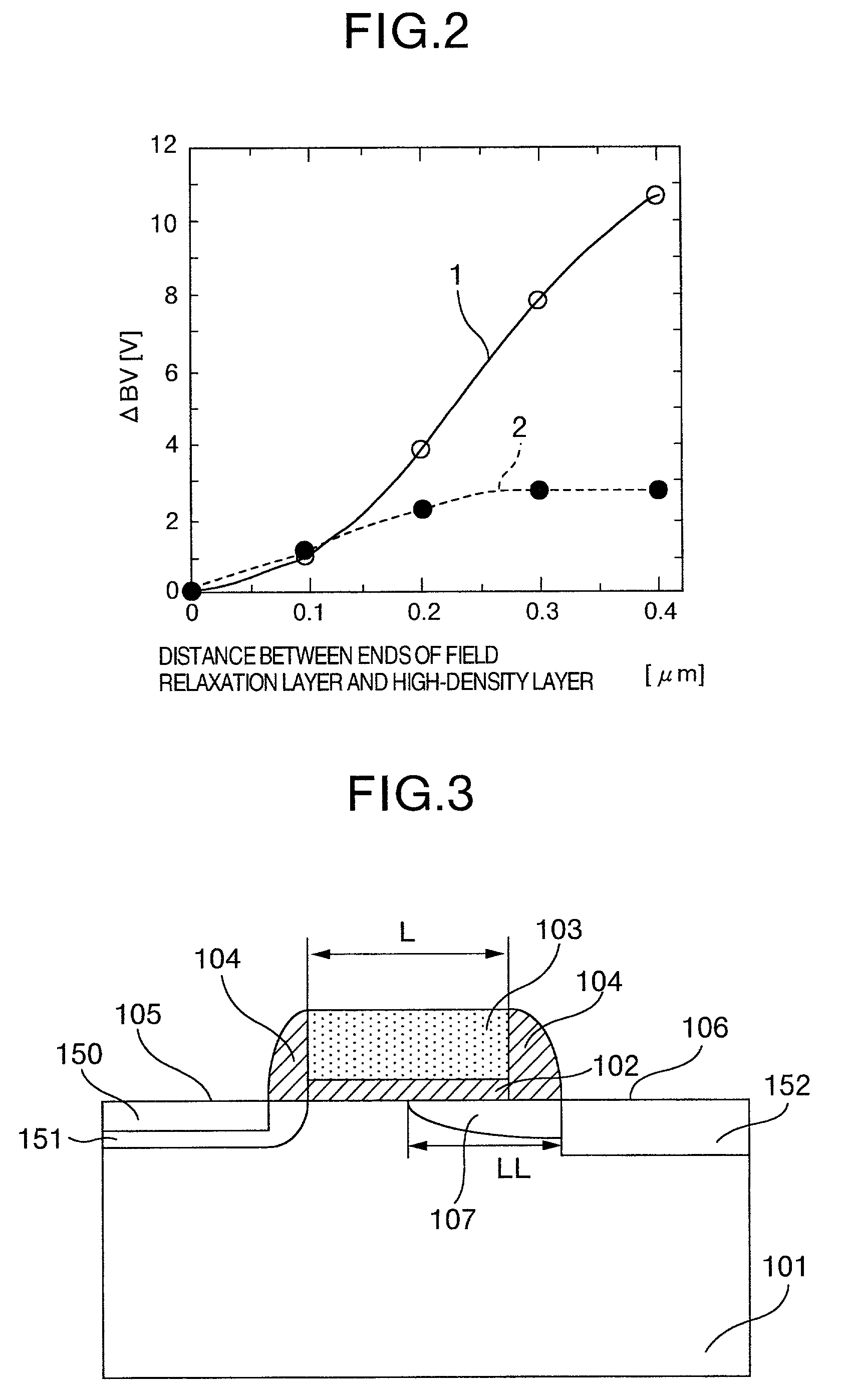Field effect transistor
a field-effect transistor and transistor technology, applied in semiconductor devices, semiconductor/solid-state device details, electrical apparatuses, etc., can solve problems such as avalanche breakdown, and achieve the effects of miniaturizing gate length, increasing blocking voltage, and further miniaturizing gate length
- Summary
- Abstract
- Description
- Claims
- Application Information
AI Technical Summary
Benefits of technology
Problems solved by technology
Method used
Image
Examples
embodiment 1
[0035]FIG. 1 is a sectional view showing-an N-type channel MOS (Metal Oxide Semiconductor) field effect transistor according to a first embodiment of the present invention. As can be seen in FIG. 1, the field effect transistor according to the instant embodiment of the present invention includes a P-type silicon substrate or a P-type well region 101 formed in either a P-type silicon substrate or an N-type silicon substrate by implanting P-type impurity ions such as boron ions, wherein formed on the P-type well region 101 are a gate silicon oxide film (gate insulation film) 102, a gate electrode 103 implemented in a laminated structure film composed of an N-type polysilicon layer doped with phosphorus and a tungsten silicide film, side walls 104 constituted by silicon oxide films formed on lateral surfaces, respectively, of the gate electrode 103, a source region 105 constituted by a high-density N-type layer (N+-layer) 150 formed in contact with either one of the side walls 104 and ...
embodiment 2
[0039]FIG. 3 is a sectional view showing an N-type channel MOS field effect transistor according to a second embodiment of the present invention. In the figure, like reference symbols as those used in FIG. 1 denote equivalent or corresponding parts. Referring to FIG. 3, the N-type channel MOS field effect transistor according to the instant embodiment of the invention includes, being formed in the P-type well region 101 similarly to the first embodiment of the invention, a gate silicon oxide film (gate insulation film) 102, a gate electrode 103, side walls 104 formed on lateral surfaces, respectively, of the gate electrode 103, a source region 105 constituted by a high-density N-type layer (N+-layer) 150 formed in contact with one of the side walls 104 mentioned above and a low-density N-type layer (N−-layer) 151 which is formed between the high-density N-type layer 150 and the gate insulation film 102 and which has a lower density than the high-density N-type layer 150, and a drain...
embodiment 3
[0043]FIG. 4 is a sectional view showing an N-type channel MOS field effect transistor according to a third embodiment of the present invention. In the figure, like reference symbols as those used in FIG. 1 denote equivalent or corresponding parts.
[0044]The N-type channel MOS field effect transistor according to the third embodiment of the invention differs from the first embodiment in that a P-type impurity layer 109 is additionally formed by doping boron or the like in and along the surface of the drain region 106 of the N-type channel MOS field effect transistor according to the first embodiment. In the case of the N-type channel MOS field effect transistor according to the first embodiment, the high-density N+-layer 152 is distanced from the gate insulation film 102 so that the voltage applied to the drain electrode is not directly applied to the gate insulation film 102. In this conjunction, it is noted that when the blocking voltage demanded for the device is to be set high, t...
PUM
 Login to View More
Login to View More Abstract
Description
Claims
Application Information
 Login to View More
Login to View More - R&D
- Intellectual Property
- Life Sciences
- Materials
- Tech Scout
- Unparalleled Data Quality
- Higher Quality Content
- 60% Fewer Hallucinations
Browse by: Latest US Patents, China's latest patents, Technical Efficacy Thesaurus, Application Domain, Technology Topic, Popular Technical Reports.
© 2025 PatSnap. All rights reserved.Legal|Privacy policy|Modern Slavery Act Transparency Statement|Sitemap|About US| Contact US: help@patsnap.com



